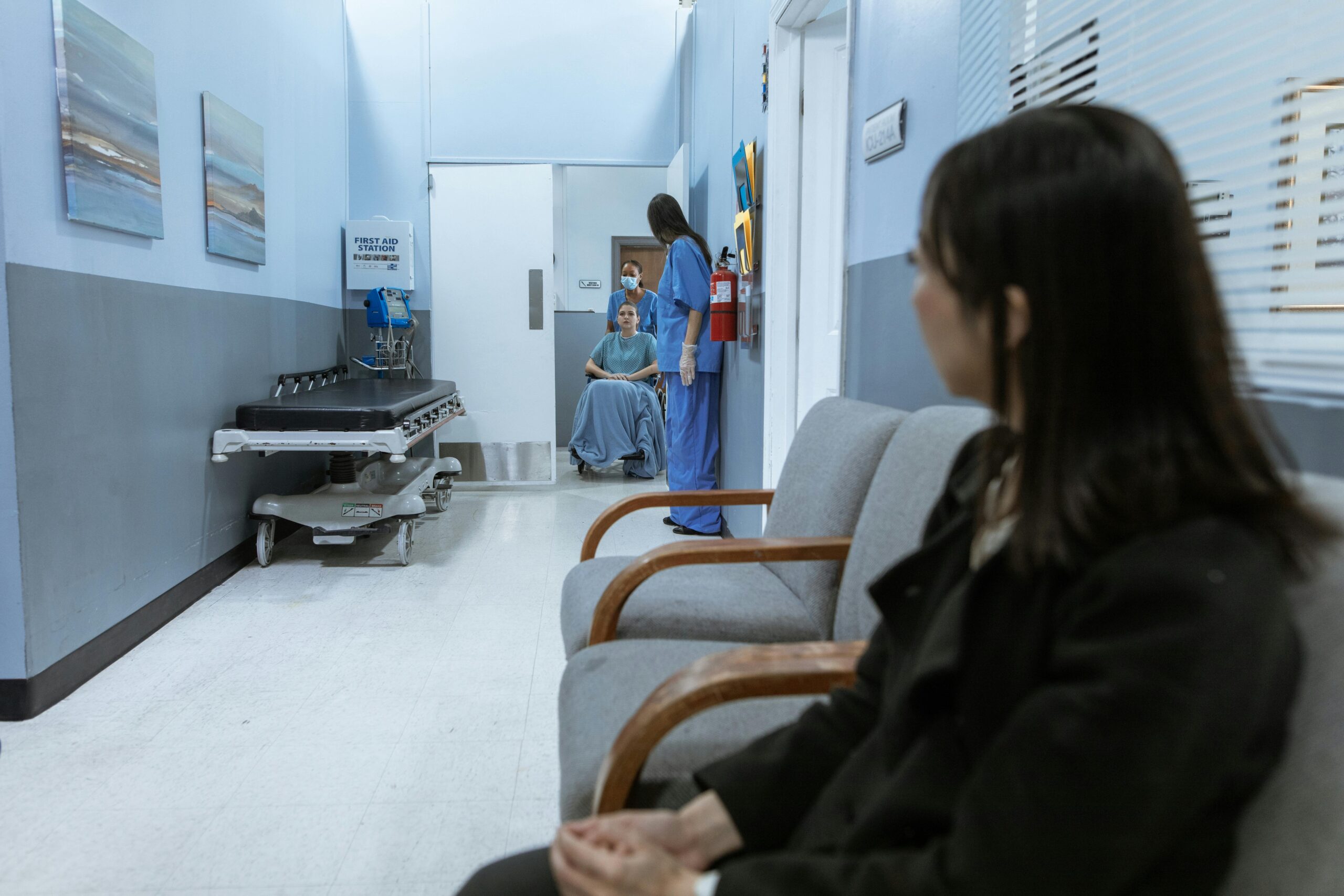The History of the Ambulance Service

One of the most important services in this world is definitely the Ambulance Service. Without the hardworking paramedics providing quick aid around the clock, many of us would be helpless in medical emergencies. But like everything, ambulances have gone through hundreds of years of evolution to grow into the way they are today.
The early days
The history of the ambulance begins in ancient times, with the use of carts to transport patients. There is evidence of forced transportation of those suffering with psychiatric problems or leprosy in ancient times. The earliest record of such an ambulance was probably a hammock-based cart constructed around 900 AD by the Anglo-Saxons.
During the Crusades of the 11th century, the Knights Hospitaller set up hospitals to treat pilgrims wounded in their battles in the \’holy land\’, although there is no clear evidence to suggest how the wounded made their way to these hospitals.
The Normans used a litter suspended between horses on two poles. Variations on the horse litter and horse-drawn wagons were used until the 20th century.
Origins in the military
The first record of ambulances being used for emergency purposes was the use by Isabella I of Castile, in 1487. The Spanish army of the time was well treated and attracted volunteers from across the continent; and among their benefits were the first military hospitals or \’ambulancias\’, although injured soldiers were not picked up for treatment until after the cessation of the battle, resulting in many dying on the field.
A major change in usage of ambulances in battle came about with the \’ambulance volantes\’ designed by Dominique Jean Larrey, Napoleon Bonaparte’s chief physician. Larrey was present at the battle of Spires, between the French and Prussians, and was distressed that wounded soldiers were not picked up by the numerous ambulances until after hostilities had ceased, so he set about developing a new ambulance system. Having decided against using the Norman system of horse litters, he settled on two- or four-wheeled horse-drawn wagons to transport fallen soldiers from the battlefield after they had received early treatment in the field.
Larrey adapted the axle assembly from the French\’s horse-drawn artillery that made their gun carriages especially manoeuvrable on uneven terrain, and so christened his ambulances \”flying ambulances\” (ambulance volantes). The flying ambulances were first used by Napoleon\’s Army of the Rhine in 1793. Larrey subsequently developed similar services for Napoleon\’s other armies, and adapted his ambulances to the conditions; including developing a litter which could be carried by a camel for a campaign in Egypt.
More advances in medical care for the military were made during the United States’ Civil War. Union military physicians Joseph Barnes and Jonathan Letterman built upon Larrey’s work and designed a prehospital care system for soldiers, which used new techniques and methods of transport. They ensured that every regiment possessed at least one ambulance cart, with a two-wheeled design that accommodated two or three patients.
These ambulances unfortunately proved to be too lightweight for the task, and were phased out to be replaced by the \”Rucker\” ambulance, named for Major General Rucker, which was a four-wheeled design, and was a common sight on battlefield of that war. Other vehicles were pressed into service during the civil war, including a number of Steamboats, which served as mobile hospitals for the troops. It was in this period that the practice of transporting wounded soldiers to treatment facilities by railroad was introduced.
Civilian ambulances
In civilian ambulances, a major advance was made with the introduction of a transport carriage for cholera patients in London in 1832. The Times newspaper said, \”The curative process commences the instant the patient is put in to the carriage; time is saved which can be given to the care of the patient; the patient may be driven to the hospital so speedily that the hospitals may be less numerous and located at greater distances from each other\”.
The first known hospital-based ambulance service was based out of Commercial Hospital, Cincinnati, Ohio, (now the Cincinnati General) in 1865. This was soon followed by other services, notably the New York service provided out of Bellevue Hospital. Edward Dalton, a former surgeon in the Union Army, was charged with creating a hospital in lower New York; he started an ambulance in 1869 service to bring the patients to the hospital faster and in more comfort. These ambulances carried contemporary medical equipment, such as splints, a stomach pump, morphine, and brandy.
Dalton believed that speed was essential, and at first the horses were kept in harness while awaiting a call. Within a few months this practice had been replaced with a drop harness arrangement, which was lowered by pulley from the ceiling straight onto the horse. Under either scheme, ambulances were ready to go within 30 seconds of being called. The service was very popular and grew rapidly, with the year 1870 seeing the ambulances attend 1401 emergency calls, but twenty-one years later; this number had more than tripled.
From then on, the plan was to crew the ambulances with fresh graduates of Bellevue\’s surgical training program, who would serve for six-month terms and be replaced by new hires from successive graduating classes.
In 1867 the city of London received six horse-drawn ambulances for the purpose of transporting smallpox and fever patients from their homes to a hospital. These ambulances were designed to resemble private carriages, but were equipped with rollers in their floors and large rear doors to allow for a patient, to be easily loaded. Space was provided for an attendant to ride with the patient, and the entire patient compartment was designed to be easily cleaned. Anyone willing to pay the cost of horse hire could summon the ambulance by telegram or in person.
A couple years later, in 1880, the President of the Liverpool Medical Institution suggested a horse-drawn ambulance for his city. In 1884, this ambulance service was created based at the Liverpool Northern Hospital. It was the first of its kind in Britain.
In Ireland the St John Ambulance was set up in 1903 in the Guinness Brewery in St. James Gate in Dublin by Doctor John Lumsden for the workers. In 1910 the Brigade began its first public duty at the Royal Dublin Society. During the 1916 rising and (after becoming the independent St. John Ambulance Brigade of Ireland) the World War II the brigade acted as an ambulance service and remained so until the setup of Regional Ambulance Services.
In Queensland, Australia, military medic Seymour Warrian called a public meeting in Brisbane and established an ambulance service after witnessing an event at the Brisbane showgrounds during Show Week in 1892. A fallen rider, suffering a broken leg was walked off the field by well-meaning but misguided bystanders, worsening his injury. As a result, the first ambulance station in Queensland opened and operated out of the Brisbane Newspaper Company.
Officers on night duty slept on rolls of newspaper on the floor. They had a stretcher, but no vehicle and transported patients on foot, although after some time, they gained horse-drawn stretchers and eventually vehicles. A year after the establishment of the Brisbane centre, another was established in Charters Towers in north Queensland, growing to over 90 community controlled ambulance centres. In 1991 the independent QATB centres amalgamated to form the Queensland Ambulance Service which is now the fourth largest ambulance service in the world.
In the late 19th century cities, including Bahia, Brazil and St Louis, Missouri, United States started using trolley cars on their tram network which were designed to act as ambulances, transporting the sick and injured. The trolley cars in Bahia included a fumigating compartment and a two bed nurse’s work area. The design of the tram network in St Louis was such that the ambulance streetcar, introduced in 1894 was able to reach all 16 infirmaries in the city.
Switch to gasoline-powered vehicles
In the late 19th century, the automobile was being developed, and started to be introduced alongside horse-drawn models. Early 20th-century ambulances were powered by steam, gasoline, and electricity, showing the competing automotive technologies then in existence. However, the first motor-powered ambulance was brought into service at the end of the 19th century, with the Michael Reese Hospital, Chicago, taking delivery of the first automobile ambulance, donated in February 1899 by 500 prominent local businessmen. This was followed in 1900, by New York City, which extolled its virtues of greater speed and more safety for the patient. These first two automobile ambulances were electrically powered with 2 horsepower motors on the rear axle.
The first gasoline-powered ambulance was the Palliser Ambulance, introduced in 1905, and named for Capt. John Palliser of the Canadian Militia. This three-wheeled vehicle was designed for use on the battlefield, under enemy fire. It was a heavy tractor unit, encased in bulletproof steel sheets. These steel shields opened outwards to provide a small area of cover from fire for the ambulance staff when the vehicle was stationary.
The British Army followed quickly behind the Canadians in introducing a limited number of automobile ambulances. In 1905, the Royal Army Medical Corps commissioned a number of Straker-Squire motor ambulance vans. They were based on a double-decker bus manufactured by the same company, although on a shorter wheelbase. A number of them were based in Oxfordshire, serving several major encampments in the area.
But the first mass-production automobile-based ambulance was manufactured in the United States in 1909 by the James Cunningham, Son & Company, a manufacturer of carriages and hearses. This ambulance featured a proprietary 32 horsepower, 4-cylinder internal combustion engine. The chassis rode on pneumatic tires, the body featured electric lights, a suspended cot with two attendant seats, and a side-mounted gong.
During World War One, the Red Cross brought in the first widespread battlefield motor ambulances to replace horse-drawn vehicles, a change which was such a success, the horse-drawn variants were quickly phased out. In civilian emergency care, dedicated ambulance services were frequently managed or dispatched by individual hospitals, though in some areas, telegraph and telephone services enabled police departments to handle dispatch duties.
Air support
During World War I, aviation moved on from experimentation to be a powerful military force, and following the war, new uses were found for the remaining aircraft. This included the conversion of planes throughout the world into ambulance planes. Although in 1917, Lieutenant Clifford Peel, a medical student, outlined a system of fixed-wing aircraft and ground facilities designed to provide medical services to the Australian Outback, the first custom-built air ambulances did not come into existence until the late 1920s.
These ideas became reality under the guidance of the Very Reverend John Flynn in 1928 when the Australian Inland Mission service established the Aerial Medical Service, a one-year experimental program. Physicians in this program had several responsibilities, one of which was to fly out to a patient, treat the patient, and fly the patient to a hospital if the physician could not deliver adequate care on scene. Eventually, this project became the Royal Flying Doctor Service of Australia.
During the Korean War, the newly created United States Air Force produced a number of air-ambulance units for use in forward operating medical units, using helicopters for rapid evacuation of patients. The H-13 Sioux helicopter, made famous by the film and television versions of M*A*S*H, transported 18,000 wounded soldiers during the war. The work of the Medical Air Evacuation Squadrons was a big success and the use of helicopters for emergency medical evacuations extended to civilian practice by groups such as the Shock Trauma Air Rescue Society.
Modern ambulances
After the Harrow and Wealdstone rail crash in 1952, ambulances in Britain were restructured to be a \”mobile hospital\”, rather than just transporting patients, thus leading to modern ambulances. CPR was developed and accepted as the standard of care for out-of-hospital cardiac arrest; defibrillation, based in part on an increased understanding of heart arrhythmias, was introduced, as were new pharmaceuticals; but studies at that time showed the need for overhauling ambulance services.
These studies placed pressure on governments to improve emergency care in general, including the care provided by ambulance services. Part of the result was the creation of standards in ambulance construction concerning the internal height of the patient care area, to allow for an attendant to continue caring for the patient during transport, and in the equipment that an ambulance had to carry. Few of the then-available ambulances could meet these standards. Ambulance design therefore underwent major changes in the 1970s.
High-topped car-based ambulances were developed, but car chassis proved unable to accept the weight and other demands of the new standards; van chassis would have to be used instead. The early van-based ambulances looked very similar to their civilian counterparts.
As time went on, ambulances matured in parallel to the newly developed EMS, gaining the capacity to carry additional equipment as EMTs and paramedics added this equipment to their arsenal. Ambulance design also evolved to reflect the ergonomics and other human factors of emergency medical care. Advances in the technology and understanding of emergency vehicle equipment also continued to influence ambulance design.
Modern ambulances are now often custom built, and as well as the specialist medical equipment now built into the ambulances, industry wide improvements in vehicle design have had an impact. Including improvements in audible and visual warning equipment to help protect crews in vulnerable situations (such as at a Road Traffic Collision), and general vehicle improvements such as ABS, which are particularly valuable for ambulances, due to the speeds reached and the weight carried by them. There have also been improvements to help safeguard the health and welfare of ambulance crews, such as the addition of patient tail lifts, ramps and winches, to cut down on the amount of manual handling a crew must perform.
Ambulance design is still evolving, largely due to the growing skills and role of Paramedics and other ambulance crew, which require specialist equipment. Other factors driving improvement include the need to help protect ambulance crews from common accidents, such as traffic collisions.
History in Ireland
Initially, from the early 1900’s to the 1970’s, ambulance services in Ireland were provided by the County Councils. Ambulance drivers were recruited from the local authority pool of drivers and had no formal training until new regulations were put into place in the late 1960’s. Back then, the Ambulance driver was accompanied by a nurse from the nearest local hospital who was the first aid renderer on the vehicle.
The mid 1960’s seen the establishment of the National ambulance training board and with it, a first aid syllabus for Ambulance drivers followed in 1966. In rural areas some Ambulance services were provided by Voluntary Aid Organisations. Under the 1970 Health board’s act, the running and provision of Ambulance services became the remit of the newly formed Health boards. Initially 8 Health boards were established but this was later increased to 10 with each area Health board providing its own Ambulance service.
The National Ambulance training school was established in St. Mary’s hospital in Dublin, in 1986 and some years later the first Government review of Ambulance services came about in December 1993. And within it, the Ambulance service had for the first time been formally recognised as an Emergency service.
This was further confirmed by a letter from the then Fine Gael Minister for Health in 1995 when asked to clarify the status of the Country’s Ambulance Service by staff representative bodies.
In 1997 on foot of one of the review group’s recommendations, Ireland had its first Emergency Medical Technicians, and the year 2000 saw the inception of the pre-hospital emergency care council, an independent statutory body with responsibility for standards in education and training in the field of pre-hospital emergency care. At the beginning of the new millennium, the Irish Ambulance service was a non-regulated profession with no skill or clinical practice guidelines to adhere to.
With the establishment of the Pre-Hospital Emergency Care Council (PHECC), Irish Ambulance personnel have signed up to a regulatory body with published clinical practice guidelines which are now on their third edition.
The Republic of Ireland National Ambulance Service was established in 2005 as part of the Health Service Executive and serves a population of 4,470,700 over an area of 68,893 sq. km from 94 Ambulance stations with a staff compliment of 1400.
In 2006 two new practitioner levels were introduced onto the PHECC register, Paramedic and Advanced Paramedic although the titles and qualifications are not recognised by way of re-grading within the statutory HSE Ambulance service.
Irish Ambulance personnel are now answerable to a fitness to practice committee and bound over to hold their place and a register of pre-hospital practitioners. They have a skill matrix consisting of almost 90 potentially life-saving interventions for paramedics and 108 life-saving interventions for advanced paramedics, including invasive procedures. They also complete additional courses such as non-violent crisis intervention, pre-hospital trauma life support, paediatric education for pre-hospital providers, major incident medical management and support, and advanced driver training courses.
Irelands Pre-Hospital practitioners have evolved over the past decade in to a dynamic and competent group of medical professionals, sadly all too often their commitment to serve the public and their dedication to their profession is forgotten.
By Catherina Arndt
You might also like
For relevant updates on Emergency Services news and events, subscribe to EmergencyServices.ie









